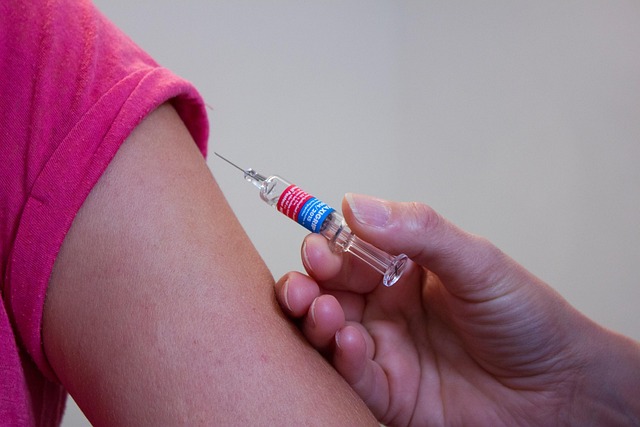Recognizing complications such as bacterial superinfection and referral indicators
Shingles can cause a painful, blistering rash that usually follows a single dermatome and resolves in weeks, but complications such as bacterial superinfection or persistent nerve damage can occur. This article summarizes treatment options, warning signs that suggest worsening infection, and when referral is indicated.

Shingles, caused by reactivation of varicella-zoster virus, typically produces a unilateral, vesicular rash along dermatomes and acute nerve pain. While most cases improve with early antiviral therapy and symptomatic care, some patients develop complications including bacterial superinfection of lesions or prolonged neuropathic pain. Recognizing changes in the rash, systemic signs, or new neurologic symptoms helps clinicians decide when escalation or specialist referral is needed. This article is for informational purposes only and should not be considered medical advice. Please consult a qualified healthcare professional for personalized guidance and treatment.
What role do antivirals play?
Antiviral medications shorten viral replication, reduce acute symptom burden, and can lower the risk of complications when started early, ideally within 72 hours of rash onset. Common antivirals target viral DNA replication and are often prescribed for adults with significant pain, extensive rash, or immunocompromise. Vaccination and immunization history influence risk: vaccinated individuals typically experience milder disease. Antivirals do not eliminate the need for wound care or pain control but form a key component of early treatment to limit viral spread in affected dermatomes and reduce subsequent nerve injury.
How to manage rash and blisters?
Rash management focuses on keeping lesions clean, reducing discomfort, and preventing secondary bacterial infection. Blisters should be left intact where possible; sterile dressings can protect areas prone to friction. Monitor for increased redness, swelling, warmth, or purulent drainage, which suggest bacterial superinfection. Secondary infection commonly involves skin bacteria such as Staphylococcus or Streptococcus and may require topical or systemic antibiotics depending on severity. Maintaining good hygiene and avoiding scratching help reduce the risk of contamination and scarring.
How is pain and neuropathy treated?
Acute pain from shingles arises from inflammation of peripheral nerves and skin. Analgesics ranging from acetaminophen or NSAIDs to short courses of opioids may be used for intense pain under clinical supervision. Neuropathic pain often responds to adjuvant agents such as gabapentinoids or certain antidepressants when appropriate. Early antiviral treatment can reduce the likelihood and severity of postherpetic neuropathy, but persistent neuropathic pain may require referral to pain management or neurology for specialized regimens, nerve blocks, or multidisciplinary approaches.
When are analgesics and corticosteroids used?
Analgesics are tailored to pain severity and comorbidities; clinicians balance efficacy with safety, especially in older adults. Short courses of systemic corticosteroids have been used in selected patients to reduce acute nerve inflammation and functional impairment, but their use is weighed against potential risks, particularly in immunocompromised individuals or those with uncontrolled diabetes. Corticosteroids do not replace antivirals and are not appropriate when there is concern for bacterial infection. Decisions on adjunctive corticosteroids should be individualized and, when uncertain, considered in consultation with specialists.
What about topical care and hygiene?
Topical measures can soothe skin and reduce local irritation. Non-irritating cleansers, cool compresses, and, where appropriate, topical analgesics or dressings may provide symptom relief. Avoid using topical corticosteroids directly on open, infected lesions without microbiological guidance. Good hygiene—regular gentle cleansing, keeping lesions covered when necessary, and handwashing—reduces bacterial contamination. For facial rashes, particularly near the eye, topical care should be coordinated with ophthalmology if there is any ocular involvement.
When to seek referral for nerve or dermatomes involvement?
Referral to a specialist is warranted when there are signs of bacterial superinfection (increasing pain, expanding erythema, purulent crusting, fever, or regional lymphangitis), progressive neurologic deficits, ophthalmic involvement, or atypical distribution beyond a single dermatome. Patients who are immunocompromised, have severe or recurrent outbreaks, or fail to improve on standard therapy also need prompt evaluation. Eye involvement—redness, vision changes, or lesions near the eye—requires urgent ophthalmology referral to prevent corneal complications. Neurology or infectious disease consultation may be appropriate for severe neuropathy, suspected disseminated disease, or diagnostic uncertainty.
Conclusion
Effective shingles treatment combines timely antivirals, appropriate analgesia, careful topical care, and attention to vaccination status to reduce complications. Recognizing signs of bacterial superinfection—such as increased swelling, warmth, pus, systemic symptoms—or evidence of progressive nerve or ocular involvement is essential to guide escalation of care and referral to specialists. Early recognition and coordinated management support better outcomes and help limit long-term neuropathic sequelae.






